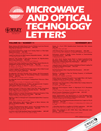CMOS direct injection-locked frequency divider (3.55 mW 80 GHz) with 26.3% locking range using distributed LC tank and body bias techniques
Abstract
A 3.55-mW 80-GHz complementary metal-oxide-semiconductor (CMOS) divide-by-2 direct injection-locked frequency divider (DILFD) using distributed inductance-capacitance (LC) tank and body bias techniques for operation frequency and locking-range enhancement is demonstrated.Compared with the traditional LC tank, the distributed LC tank significantly decreases the equivalent LC and C values. This in turn results in an increase of the operation frequency and the locking range. In addition, trans-conductance (gm) of the injection transistor can be improved by body bias due to the reduction of its threshold voltage. This in turn results in an increase of the locking range (6.2 GHz in simulation). Furthermore, power consumption is reduced by eliminating the head current source in the traditional DILFD. Measurement result shows the proposed DILFD achieved a state-of-the-art 26.3% (61.5–80.1 GHz) locking range and an excellent output phase-noise of −128.69 dBc/Hz at 1 MHz offset. © 2011 Wiley Periodicals, Inc. Microwave Opt Technol Lett 53:2694–2697, 2011; View this article online at wileyonlinelibrary.com. DOI 10.1002/mop.26333




